
..........................................................................................................................................................................................................
bayerische motoren wheels

despite having featured in our lives since the early part of the 19th century, it looks as if electricity's day has finally arrived again. it's hard to avoid governmental pressure to eschew gas or oil as the principal means of heating our homes, trading such methods for that of electricity, whether through the often disparaged storage heating, or the new kid on the block, air source heating. the industry itself has cleaned up its act of late, closing coal-fired power stations, and sidelining gas-fired alternatives in favour of renewables and nuclear. the latter is gratuitously exemplified by the inordinate cost of the hinkley c nuclear station on the bristol channel coast of somerset.
and despite technological claims that hydrogen would better solve the world's transport future, arguably at the behest of elon musk's tesla corporation, the world's car manufacturers have engaged with electricity to avoid being left behind by the american usurper. it may or may not come as something of a surprise to learn that britain's best selling electric car is the tesla 3. of course, while the government rests on its laurels, having banned the sale of petrol and diesel vehicles from 2030, the charging infrastructure seems to have barely started. and if claims that generating the extra power necessary to make an electric transport future a reality prove to be true, there's still the uneasy feeling that the network might have real problems trying to cope with millions of drivers all plugging their cars in on return from the daily grind.
with just over nine years to go, however, we can but hope that a solution is already in the overhead cables.
and then to add to electricity's impressive cv, a matter of days ago, shimano released their latest versions of dura-ace and ultegra, both of which are apparently electric only, with no salvation on the horizon for those of us who prefer to push levers than press buttons. that said, if we are truly intent on saving the planet, perhaps lowered consumption of electricity ought to be every bit as much on the cards as how we go about generating it. it doesn't seem too impolite to suggest that involving innocent electrons in something as simple as bicycle gear changing, might be an unnecessary luxury.
but electricity is not only being harnessed to solve the future of automotive transport, but also that of the humble bicycle. despite my constant contention that a great deal of those opting for an electric bicycle are perfectly fit enough to ride the analogue version, any option that offers less effort is more likely to be adopted by the man (or woman) in the street. and therein you have the recipe for success that has projected electric bike sales into an upwardly mobile, exponential curve, making it the poster bike for those who wish to re-model our cities while coincidentally promoting a more sustainable means of transport. notwithstanding, of course, the fact that both electric vehicles and e-bikes will make greater demands on the planet's stores of lithium, and on the environmental concerns of the countries in which it exists.
however, my cynicism, you may be relieved to learn, is tinged with a large chunk of pragmatism. given that clamouring to retain many of the mores of modern civilisation is likely to remain steadfast, if it's possible to facilitate their continuance by more environmentally sound means, so doing is quite probably a particularly good idea. therefore, moving goods across 'the last mile' by means of electric cargo bikes, for example, is most likely worthy of our approbation. but in nearly all of such cases, shareholders and stakeholders must feature in future considerations every bit as much as the solution itself. and if electric bicycles truly are the future, it would be particularly prudent that car manufacturers hedge their bets by keeping at least one toe in the water.
such is the case with germany's bmw, a company currently featuring regular tv adverts for their ever-growing range of electric cars. bmw have teamed up with cube to develop the dynamic cargo concept. and bmw are not hiding their light behind a nearby bushel when justifying their involvement with a bicycle company. according to head of vehicle concepts, jochen karg, "With regard to the steady increase in traffic density in city centres, concepts for micromobility vehicles can make a significant contribution to improving the interconnectedness of urban mobility. That is why we are deliberately looking beyond our company's core business."
the principal difference between the current crop of e-cargo bikes and cube's concept dynamic cargo is the tilting mechanism that allows the bicycle part of the machine to lean to either side when cornering, all the while maintaining stability and avoiding the cargo tipping from its container. it doesn't need me to point out that this will potentially increase the manouevrability of the cargo bike when negotiating often tight spaces in the inner-city and urban settings for which it is designed. whatever you or i might think of bicycles with batteries and motors attached, the fact that the e-bike sector is not only continuing to develop solutions, but involving technical know-how from a parallel industry is surely one that odes well for the future.
however, with no disrespect intended, i can't help thinking that the resulting e-cargo bike would gather greater cachet were it badged as a bmw than that of a cube.
monday 13 september 2021
 ..........................................................................................................................................................................................................
..........................................................................................................................................................................................................pointless?

like many a drummer, i spend an embarrassing portion of my evenings, trawling through youtube videos in which various retailers (predominantly american) demonstrate the latest in snare drummery and occasionally, drum kittery. the snares follow a well-trod pattern: low, medium and high tuning; snares off then on; rudimental playing, then bass and hi-hat. after about five or six of those, and i do begin to question my life choices. for, in essence, assuming a high-end price point - and they almost always are - there seems little or no difference between each, no matter whether wood or metal, variation in depth and brand of drum head. and on the very rare occasions where there might be a perceptible distinction, i guarantee that were i to add it to my drumset for gigging purposes, nobody in the audience would notice.
it does seem to break the drummers' omerta to say so, but you can fashion a snare from brass, steel, bronze, aluminium, maple, cherry, mahogany or any other wood you care to mention, and your audience (even the drummers) won't know the difference. however, the marketing that accompanies most of them, will place great emphasis on the number of wood plies, the grain orientation and the differing woods used in the shell construction, but again any onlookers in the vicinity, particularly if the drums are miked, will never know the difference.
so what's the point of the reviews and videos? i have asked myself the same question for years. i own four dw snare drums, and if i tune them all to the same pitch, though i can detect small differences, add them to a drumset, and join in with bass, keyboards and guitar, and i'd easily fail a blind test. steve jordan, the man about to replace charlie watts for the next rolling stones tour, has a drum tech to replace the snare drum for every song. assuming he continues this practice for the stones' tour, how many folks in the audience do you think will notice the difference in sound?
at one time, i was in the enviable position of reviewing some beautiful bicycles. there were summer seasons when my own bikes remained closeted in the bike shed, as review bike followed review bike. i used to keep tabs on my kilometreage to ensure i replaced my chains with dutiful frequency, but some years that became a pointless exercise. however, nowadays there are so many magazines, websites and youtube channels offering bicycle reviews, that i have shied away, for what possible difference could an old fart like me make? there is, however, a bit of a pattern to all this reviewing, one that is easily missed, and it's the part that i think renders many of them quite pointless.
in much the same way as the drum companies have their sponsored musicians, obviously enough, so do the bicycle and component manufacturers. it's highly unlikely that gretsch, dw, tama or ludwig would bring a new model to market, without first having had their professional endorsers play the drum(s) in the heat of battle. even some of the low-cost drums and drumsets can be toured without the majority of the audience noticing, or even caring. similarly with bicycle frames and components, but for obvious reasons, the pros tend to ride the top shelf kit. and if you take even a cursory glance across the print and pixel offerings, you'll discover that the majority are high-end machinery.
and that high-end machinery has probably already featured in more than a single grand tour under the piloting of the world's top professional riders, before being announced to the public. there is a maxim that you should never rely on a professional for kit recommendation, for it is part of their job to ride what they're given, and contractually obligated not to diss the product in public, even if it's the worst they've ever used. however, part of the deal with sponsorship is the valuable feedback from riders who could care less what name is on the downtube, as long as it wins races. if some aspect of that equation is coming up short, you can be sure that, in no uncertain terms, the manufacturer will be told. thus, when the bike is ripe for public release, hopefully all the bad bits have been ironed out.
given that few reviewers are professional riders, it seems relatively unlikely that they're going to give the product a harder time than the pros. i know i certainly couldn't, and even after repeatedly undertaking such a process for many a long year, there were few comments i could make that would cause the design department to reconsider their computational fluid dynamics. yes, there have been occasional niggles with componentry, but those were usually isolated incidents rather than cause for corporate concern. and at the upper price points of review models, very few, if any, are making crap (no matter what hambini says); it's too competitive a market to drop a stitch.
the majority of top end bikes these days are of monocoque construction which involves very expensive molds into which the carbon is laid. it would take a huge chunk out of the annual budget should one of these bikes be found to contain insurmountable design flaws, only discovered at the magazine review stage. damning publicity in print would be hard to reconcile at a later stage. just look at boeing's 737 max.
i recall continuously pestering one particular manufacturer to send me their lowest price model, for it strikes me that that's the area where a review makes most sense. a £600 bicycle is unlikely to have been ridden in the professional peloton, and might just be a cookie cutter from an un-named taiwanese factory. nor is it likely to be outfitted with di2, campagnolo eps or sram wi-fli axs. yet despite what i felt was suitable justification for my request, the bike was never sent.
prior to writing this diatribe, with which you're free to disagree, i read several bicycle reviews, all of which were of bicycles costing several thousand pounds. in many, the reviewer quoted percentage increases in stiffness, in weight loss and of speed increase, none of which appear to have been calculated by the reviewer. in other words, the manufacturer supplied these along with the review model. in essence, there's nothing wrong with that, but it's not exactly a part of the review. it's what the manufacturer wants you to believe, the implication being that such factors might revolutionise your riding.
in one or two cases, on receipt of a review machine, i received a missive from the manufacturer/distributor saying that they'd be very interested to hear what i thought of their bicycle, a platitude that subsequently turned out to be completely untrue. you can be sure that any future publicity will not contain statements such as "the paint started to flake off within the first few days", or "there was incessant chain rub on the front mech during seated climbing", even if both were demonstrably true. but finding a top-end bicycle in which this might have been the case, is akin to searching for hen's teeth.
there are many excellent reviewers in print and in pixel (dave arthur's just ride bikes being a case in point), but the chances of crap being allowed out in the first place is unlikely to the point of non-existence. on the whole, reviews are simply another part of the publicity machine. do not misunderstand me, nobody is being duped, not you, me or the reviewer, but if you'd just been offered £11,500 worth of superbike to ride around on for three weeks, would you refuse?
i can, of course, see the similarity between my writing this and turkeys voting for christmas.
sunday 12 september 2021
 ..........................................................................................................................................................................................................
..........................................................................................................................................................................................................super-duper

so, on each alternative friday afternoon, two cycling colleagues along with yours truly, head southwest to debbie's, carrying sales copies of that particular week's local newspaper. one of the three continues onto port charlotte with the sales stock for his own shop, while the remaining two, of which i am one, end the trip at debbie's for coffee and, perchance, unnecessary sustenance for the return trip. the latter can be easily justified simply by citing 'carbo-loading', less to excuse our perhaps ill-advised calorific consumption to any innocent bystanders, and more to ease our own particular guilty consciences.
it is a bit of a myth that incessant cycling excuses any and all luxury food consumption without fear of weight gain; the laws of physics still dictate that weight loss or stagnation of same depend on the relation between calories consumed and calories burned. blind optimism, allied to total ignorance can easily be invoked to justify any amount of millionaire's shortbread, carrot-cake or lemon drizzle cake, mid or post ride, to say nothing of the accompanying soya latte. a double-espresso is highly unlikely to swing the balance one way or the other, but i have to seriously ask myself how often the buck stops there?
calorific intake bears legitimate comparison to my recent diatribe concerning the hapless power-meter, acquisition of which is rarely (it seems) accompanied by a learned approach. granted, the latter offers greater opportunity for conversation in the sunday morning peloton, citing numbers that neither conversant actually comprehends, but comes across as knowledgeable to any within earshot. it's in the same realm as calibrating the garmin to display kilometres; everyone knows that the latter sounds far more impressive when expressed as kilometres-per-hour than miles-per-hour.
many of us simply rely on the calorie display of a gps device to justify the saturday lunchtime, double-egg roll, oblivious as to the effect of one upon the other. like the majority of coffee shops, debbie's does not indicate the calorific content of any of its proffered goodies. thus, we blindly congratulate ourselves on an active lifestyle, while hoping for the best that our bravado will keep the percentage of body fat well under control. and for all most of us know, we might be totally correct. but then again, we might be totally wrong.
my money's on the latter.
but news that chris froome, firstly having invested in factor bikes, and now in supersapiens, had me looking at their website to find out where it was that spiderman had chosen to spend his savings. for those as ignorant as i on the machinations of supersapiens, let me advise you that they appear to offer a glucose sensor manufactured by abott which you attach about your person (the upper arm seems to be the popular spot) and which streams continuous glucose data to the supersapiens smartphone app. learning this makes a tad more sense of being subsequently informed to 'show up well fuelled'. this entails visualising your fuel intake on your iphone, and thus measuring your fuel 'loading' prior to undertaking key workouts or standing on the race start-line .
it is perhaps stating the glaringly obvious that this pertains more to the aspiring competitor, than the average sunday morning rider, but i'd scarcely bet against mr and mrs average being sufficiently intrigued to join in the party. this assumption is based not only on the credibility of mr froome's investment, but the relative simplicity of a smartphone app allied to a starting price of around £130 which advises, "This is for the obsessed athletes who love Zwift, Peloton, and yoga." i'm sure you can see my point.
chris welcomed himself to the world of calorific measurement for the rest of us by saying, "I'm proud to be joining Phil and his team at Supersapiens. I'm constantly searching for improved performance from myself and my equipment. I'm looking forward to playing my part in bringing Supersapiens to performance athletes of all levels in cycling and beyond. It's great to be part of something so genuinely game-changing." i confess i am insufficiently well informed in such matters to know whether supersapiens is a genuine game-changer, or whether froome's claim is simply marketing hyperbole.
measurement of glucose levels has been around for many a long year, though perhaps more at the expert medical end of the spectrum; professional cycling teams have made use of this for a while, obviously with good reason. however, it seems quite possible that, in tandem with the power-meter, there will be a number of riders eager to make use of the services offered by supersapiens, yet every bit as oblivious to the end results, as would i.
now, how do i book time in a wind tunnel?
saturday 11 september 2021
 ..........................................................................................................................................................................................................
..........................................................................................................................................................................................................the emperor's new shoes
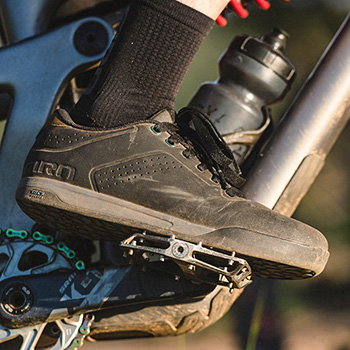
our most recent recruit to the sunday morning peloton, joined us effectively unprepared, arriving in a pair of baggy shorts, t-shirt and trainers. the bicycle itself is not one that van aert would use to challenge alaphilippe, but a more than pragmatic choice for joining in the happy perambulations. however, by the time we had reconvened at debbie's for coffee and an over-the-top hot chocolate, he admitted that he'd been feeling it in his legs over the last few kilometres, and welcomed the opportunity to sit on the comfy couch.
i pointed out that matters might be improved a smidgeon, were he to swap platform pedals and trainers for cleated shoes and clipless pedals. this he obviously took note of, arriving the following sunday with just the very footwear and pedalry described above. a few tweaks on the tension screws to allow easier access and constant reminders to unclip when slowing to a halt, and once again, all was well with the world. as far as i know, he has yet to suffer the rite of passage that comes to us all of suddenly forgetting that he's cleated into the pedals and subsequently falling over in full view of an adoring public.
my own baptism to the world of the cleat could not have been more public. many years ago, stopping at the junction of jamieson street and bowmore main street, i momentarily forgot that i had replaced toe-clips with red look cleats and attempted to pull my foot backwards. too late, i realised the error of my ways and keeled over sideways onto the tarmac, leaping up immediately in the forlorn hope that this exercise in stupidity remained unseen. i then checked that my prize carbon colnago c40 had not suffered the slings and arrows of tarmac discontent. (it hadn't).
since then, cycling footwear has improved immeasurably, the soles being persistently strengthened with varying amounts of carbon fibre to offer a stiffness that makes it harder to walk comfortably, but offers arguably improved performance when sprinting for coffee and a double-egg roll. which is fine for the weight and performance obsessed roadie, but whither the offroad market, one that has received a recent boost with the invention of the gravel bike? the latter is portrayed in two distinct lights: there's the bike-packing meme that encourages riders to festoon a gravellous frame with all manner of oddly-shaped bags, usurping the age-old touring bike with panniers. and then there's the nascent gravel scene, one that involves the competitive edge and is already being accessorised with dropper seatposts and suspension forks, eching the mountain bike scene in the early 1980s.
the latter originated with platform pedals reminiscent, or even borrowed from, the bmx world. i know; i owned a pair. my muddy fox spent at least a portion of its life being ridden with a pair of berghaus leather trekking boots, subsequently replaced by a pair of stout outdoor shoes. it will come as little surprise that the inveterate tinkerers at shimano eventually added clips to their platform pedals, subsuming the compact and bijou cleats of their matching footwear within the chunky soles. a bit like their infinitely changeable gear cassettes that last only as long as it took them to invent hyperglide, soon the majority of offroaders switched to cleated footwear and all has remained as such ever since.
the versatility of the latter has even seen them used on road bikes in preference to the need to walk like a duck.
but, as with many aspects of velocipedinal life, some things seem to exhibit a tendency to come full circle. however, when that happens, any cycle marketing department worth its salt, could scarcely admit that their fabricators have just re-invented the wheel, such as conceivably could be the case with giro's new latch flat pedal shoe. what it may signify, however, that there is a growing market keen to eschew the ignominy of cleated feet. giro's website claims that the new latch is "is a benchmark in flat-pedal performance". in addition, giro claim that the shoe incorporates mute foam midsole technology and a tack rubber outer sole compound that work together to increase foot to pedal contact, grip, and rider stability.
the mute foam reputedly performs a similar function to that of mountain bike (or gravel bike) suspension, keeping the footwear in contact with the pedal, always assuming the riders' legs don't force vertical separation. but at the risk of being predictably cynical, it looks a bit like the emperor's new shoes. after all, bmx riders, who arguably test the limits of shoe/pedal connection every bit as much as the offroad community, seem to have survived perfectly well with the waffle sole beloved of a pair of vans.
remember when we just used to wear shoes?
friday 10 september 2021
 ..........................................................................................................................................................................................................
..........................................................................................................................................................................................................hard things are hard. and it's ok.

when the pandemic hit scotland in march last year and lockdown ensued, my sunday morning compatriots and i discovered the dictionary definition of the word 'group'. two of us who live fairly close to each other in the village were in the habit of riding together, prior learning that 'group' meant 'more than one'. so we began riding solo, frequently separated by a mere ten minutes or so, along the same route. that usually meant that we could both enjoy a socially distanced latte at debbie's before riding home, separated by a few hundred metres. it should be said that, in truth, islay's population (including the police) seemed to have very little problem with any of our cycling activities.

we opted to interpret nicola sturgeon's advice to 'stay local' to mean 'not off the island', though i cannot deny that we were stretching the credibility of not more than five miles from home, even on an island where everyone knows everyone. hoping that no-one would know how far we were from home would have been a bit of a lost cause. and technically, debbie's is less than five miles across the loch from bowmore, as the geese fly.
however, the covid crisis brought changes at work, entailing, for purposes of economy and pragmatism, that i began covering two jobs as opposed to one, necessitating a monday to friday work pattern. though adverse mental health was never on the cards, getting out on the bike at weekends became more of a necessity than had previously been the case. i'm sure there are many who can identify with that state of affairs.
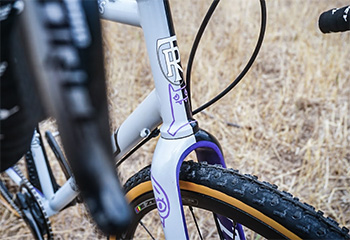
however, mental health issues are an ocean away from suffering a traumatic brain injury (tbi) while undertaking training as a professional rider. which is exactly what happened to ritchey usa cyclocross rider, ben frederick. according to his recollection of the incident which took place around five years ago, "...the legs were tired. The trails should fix that. Another hour ripping turns, going fast, getting rad on the cross bike. Flow. Another hour. A break. Eat. Drink. Easy spin to the next trail. The dirt was kind of sandy and wet; tire stops, head smacks the ground and digs in. No bounce, no slide. Like hitting a wall."
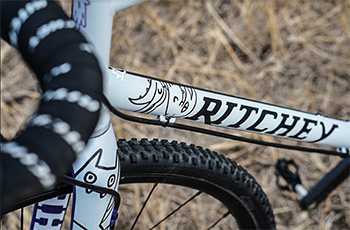
ben didn't lose consciousness; in fact, he continued riding for another half hour. it was only after returning home and following a nap, that he realised things were distinctly other than they should have been. however, recovery eventually prevailed following a lengthy period of mental and physical disarray. "It was at this moment, when I felt most alone, Christin and Colin Reuter & Maris and Cole Archambault who didn't know me, but for a few short interactions in the cycling community, reached out. They came over and sat with me in my darkened living room for short dinners and asked how they could help. They became a lynchpin in my recovery, helping fundraise, co-ordinating logistics, and introducing me to their friendly group who have in turn become like family and an amazing support network. They''ve all helped guide me out of what was a very dark place. I will be forever grateful."
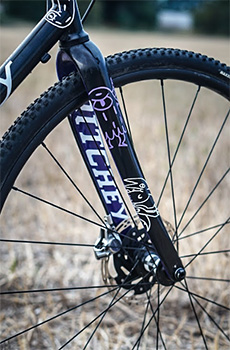
as a result of this kindness and generosity and having experienced a tbi at first hand, ben is dedicating his return 2021/22 cyclocross season to raising awareness of mental health and the love your brain foundation. the latter is a not for profit organisation, the mission of which is to improve the quality of life for those who have suffered a traumatic brain injuries. and despite his years away from competition, ritchey bicycles have renewed their sponsorship, providing two custom painted steel swiss cross frames, outfitted with full ritchey wcs cockpit components. one of the frames will be auctioned at the end of the season and the proceeds donated to the love your brain foundation.
ritchey's marketing manager, fergus liam, said, "Sponsoring Ben is about more than getting an athlete product to race on. It's about providing Ben with the means to share his story and raise awareness surrounding mental health. We couldn't be more proud of him and the work he's doing."
ben's ritchey cross bicycles have been designed in a collaboration between himself and alex carlson. each frame is painted two colours, each side denoting the light (grey) and dark (black) associated with the struggles of mental illness, which are incredibly common in tbi recovery, with purple accents representing healing and recovery. both frames are covered with 'little monsters' designed by carlson, each one representing the 'monsters of mental illness,' a reference to the internal monsters ben faced during his two-year struggle to live a normal life. these monsters are also reflected on skin suits designed by san francisco clothing manufacturer ornot bike.
throughout the coming 'cross season, ben will be selling jerseys as well as raffle tickets to win one of these custom ritchey frames. you can also donate to the cause via his website thesmallmonstersproject.com
thursday 9 september 2021
 ..........................................................................................................................................................................................................
..........................................................................................................................................................................................................exponential. how accelerating technology is leaving us behind and what to do about it. azeem azhar. random house business hardback. 340pp £20

the bicycle has remained remarkably faithful to its origins for more than one hundred years, though the last couple of decades may have been more at the behest of the uci, than any demonstrable lack of development. granted, in the intervening years we've acquired more gears than are truly necessary, electronic shifting of those gears, and disc brakes that would not have seemed out of place on a 1955 citroen. but looked at with a wider perspective, the humble analogue bicycle has not exhibited what might be described as untrammeled growth and development.
in this respect, it's hardly alone. the motor industry has scarcely outshone the bicycle industry in an arguably shorter period. the development of the latter has continued apace, but the fundamental principles of the average family saloon are pretty much as they were in 1940s or 50s. it's mostly body styles that have changed, and that often seems to have had more to do with fashion than any technological aspect. televisions have moved from cathode ray tubes to light emitting diodes and incorporated so-called smart technologies, but anyone witnessing the first broadcast in 1934 would probably recognise a tv in a modern sitting room without too much difficulty.
the electric bike, on the other hand more closely resembles the principles espoused by author azeem azhar in this intriguing book, entitled 'exponential'. you see, the bicycle, the motor car, televisions, cookers, fridges, et al have exhibited the sort of growth that we all pretty much take for granted. in other words, slow and measured. the electric bicycle, though perhaps not the finest example, has displayed something closer to exponential growth. the first modern-day electric bike surfaced around 1989, simmering in the background ever since, increasing in number year on year, until, within the last few years, it has experienced phenomenal growth over a relatively short period of time.
azhar, however, features differing, more dramatic examples like amazon, apple, google and facebook, all of whom have outgrown more traditional businesses at an alarming rate, underlining the subtitle of exponential - 'accelerating technology is leaving us behind'. however, this is not necessarily a publication solely for those with the wherewithal to comprehend the technologies that are landing upon us from a great height.
"...I'll aim to help non-technologists get a better understanding of the technologies underpinning this period of rapid social change."
and the latter is probably the key phrase to understanding why you (and by 'you', i mean 'me') need to read this book. for instance, for those who have no interest in owning or riding a bicycle, its presence in modern society impinges very little if at all. i do not own a motor car and have little intention of changing that, aside from which, its presence in society has not been one to cause particularly rapid change. likewise a fridge or television. those are both accepted parts of society and are unlikely to alter any perceptions to a great degree. however, a recent call to british telecom for technical support with our new cloud voice system, resulted in an answer message that suggested i might more pragmatically contact them on whatsapp. and anyone booking a vehicle on calmac ferries is asked for a mobile phone number to allow the ferry company to contact them by text should conditions or sailing times change. both of these are dependent on ownership of a smartphone. the iphone was released in 2007, taking a mere fourteen years for its presence to inveigle its way into almost complete social acceptance.
so what does the author mean by exponential? in the preface, he explains that new technologies are being invented and scaled at an ever-faster pace, all while decreasing rapidly in price. "If we were to plot the rise of these technologies on a graph, they would follow a curved, exponential line." and should you have found the rate of technological change just a tad on the exponential side, you are, apparently, not alone. according to mr azhar, the public relations company edelmann runs an annual survey on trust in the public sphere. "One of their key questions - put to 30,000 people in 20 countries - is whether they feel comfortable with how quickly technology was moving. In 2020, more than 60 percent of respondents felt the 'pace of change was too fast', a number that has been creeping upwards for several years."
to bring home just how much the world's technologies and technology companies have affected not only society, but government, the author cites the current covid-19 pandemic as an ideal example. governmental implementation of so-called 'track and trace' smartphone apps had more to do with the world's principal technology companies than either holyrood or westminster. both apple and google "...updated their operating systems to enable some underlying components, which made building contact-tracing apps easier." as azeem azhar perceptively points out, the tech giants' software updates became a contributory factor in allowing governments to build more effective contact-tracing apps. "But it also underlined that it was Apple and Google who determined what governments and scientists could - and could not- do. The code had become law."
the author writes knowledgeably about his subject matter, in a more than approachable style, and one that equates well to both believers and disbelievers alike. i would take issue with his perceptions and appraisals on one or two occasions, but surely that's the mark of a good book? and there may be an unintentional bias towards those who have done most to effect change, particularly in relation to the salaries commanded by the few at the top. when discussing remuneration of employees in this exponential age, azhar infers that these often eyewatering salaries will be discussed later in the book, but i found little to corroborate this. when you read that he has been the founder of several tech start-ups (subsequently sold) and is now an active start-up investor, it's not hard to see from which side of the fence his observations arise. that said, the majority of his narrative seems commendably even-handed.
my attraction to the bicycle is based predomiantly on its relative simplicity. i don't need electronic gear shifting, wireless or otherwise, and i'm pretty sure i can survive without hydraulic disc brakes, good though they may be. i don't own a smartphone, so many of the technologies that rely upon it pass me by. however, i am relatively fortunate, as my work allows me the luxury of not being dependent on smartphone ownership, leaving me mercifully free from associated technologies. but to be honest, i'm surprised that has remained possible. it's a luxury that applies to fewer and fewer these days, as does reliance on social media. even if you embrace all the technologies described in this book, it's worth reading if only to place your comfort and joy in some sort of perspective. this is not a book about bicycles or bicycle technology in any way, shape or form, but as we potentially enter the dawn of a new and increasingly electrified transport era, there are many parallels to which it's worth paying attention.
a compulsory purchase.
wednesday 8 september 2021
 ..........................................................................................................................................................................................................
..........................................................................................................................................................................................................misguided?
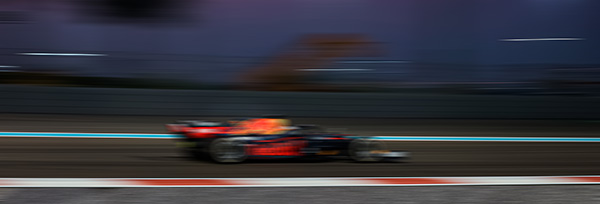
it seems very unlikely that bowmore or port ellen villages are unique in their after dark recreational road activities. there seems to be a rite of passage for many of those who recently, and not so recently passed their driving tests, a rite that seems to involve ownership of a volkswagen golf, vauxhall astra or ford fiesta, but rarely in standard trim. a personalised number plate is always a good start, while the more ostentatious are likely to decorate the windscreen with a full-width decal proclaiming the make of car in which they are sitting, probably too low to see over the dashboard.
the latter affectation has always elicited curiousity from yours truly, given that i'm none too sure that anyone actually cares what make of car is being driven. but now that i've made mention, it dawns on me that my ritchey logic is festooned with self-applied stickers detailing the make of groupset to be found about its person. folks in glass houses, etc., etc.
these vehicles usually feature tuned engines, or at least give the impression of tuning through the use of exhaust pipes that resemble the average chromed drainpipe. these are employed, i'm given to understand, on the basis that they provide a throaty growl to a mundane vehicle, usually sold to the masses as a simple and economic means of transport. apparently the implication is that creating such a curated cacophony will instil in the hapless bystander, a notion that the driver is but millimetres from partnering verstappen in next year's formula one circus.
to encourage this facade, in the evening's later hours, they are to be found pummeling the accelerator pedal while still in a gear that they ought better to have changed several hundred yards previously. if it's possible to squeeze out some tyre squeal when rounding the bend at the round church, so much the better. that no-one has been seriously injured, or garden walls demolished is likely more by sheer good luck, than any demonstrative driving skill. so why does this all take place?
well aside from an almost non-existent police presence in either village, i'm led to believe that such ferocious motoring activity is a low-cost emulation of formula one. unlike cycling, where those of a certain financial constitution can purchase an almost exact replica of the machinery ridden by their heroes, motoring enthusiasts are not only unlikely to find it affordable or practicable to avail themselves of even last year's grand prix car, but discover the illegality of driving one on britain's roads, should they suprisingly become successful in ownership. and allowing for the enormous acceleration and braking power displayed by even the slowest of formula one cars, it's very unlikely that their present driving skills would have prepared them for sitting in the equivalent of a red bull formula one car.
a friend of mine owns a very expensive replica of the specialized bicycle ridden by peter sagan, demonstrating, if demonstration were required, that while he had the economic wherewithal to acquire this excellent looking sliver of carbon-fibre, his athletic prowess falls somewhat short of that possessed by the slovakian. but, once again, unlike islay's boy racers, it is eminently possible for him, should he wish to do so, to train every bit as hard, though not without additional cost.
around two decades past, had the notion of training like a professional cyclist been a particular target, any personal trainer worth his or her salt, would probably have advised purchase of a heart-rate monitor in order to introduce a degree of structure into any associated training programme. while hr monitors remain a useful training tool, their supremacy has been all but supplanted by the power meter. and where once those were eyewateringly expensive devices to own, restricted mostly to the sponsored professional, they'll soon be giving them away inside cereal packets (not really).
many of you may have noticed that the majority of images showing shimano's latest dura-ace di2 chainset were of the power-meter variant, an almost insignificant tab at the botton bracket end of the chainset crank arm. i'd be fibbing if i were to pretend that the cost of this option equalled that of the non-power meter version; in fact, it's almost three times the price, but if you can afford dura-ace di2 in the first place, that probably won't bother you too much.
i have related the embarrassing tale of my first encounter with a power meter perhaps once too often, but on checking the recorded data, i assumed i had encountered a mechanical or electronic malfeasance. several minutes of data display showed no power output whatsoever, and i was prepeared for a call to the manufacturer's technical support department. of course, the majority of you will have realised that which i hadn't: it was downhill and i hadn't been pedalling. perhaps mistakenly, i have always thought of myself as fairly well educated, but an elementary mistake such as that above perhaps suggests otherwise. and taking into account the law of averages, it seems highly likely that there will be others who have designs on a power meter, yet no real clue as to how best to interpret the data it provides. i know it made little real sense to me.
therefore, acquiring a power meter is really only the start. either you need to educate yourself as to the meaning of all those graphs and charts, or you engage the services of someone who already does. and unless you have a specific training target(s) in mind and for some carefully considered purpose, there's the not altogether unreasonable conclusion that you might be wasting your time and money. many of us own and use gps devices attached to our handlebars, the more egotistical posting the post-ride results on strava for hopefully favourable comment from one's peer group. but personal observation would suggest that few of these devices are used for any purpose that might lead to improved cycling performance.
so while it remains almost a truism that, ultimately, we can indeed ride a verisimilitude of that ridden by the poster boys and girls on the bedroom wall, there's no denying that there's a definable point in their doing so. we, on the other hand, might just be kidding ourselves.
tuesday 7 september 2021
 ..........................................................................................................................................................................................................
..........................................................................................................................................................................................................